The skin is the biggest organ of the animal body. The skin protects the body from external wounds, prevents the entry of microorganisms, and maintains an animal’s body temperature and beauty. In farm animals, skin is an important part that helps to prepare various leather products for human utilization. Cattle skin diseases are common conditions that you will frequently face on your farm. The disease may occur due to bacteria, viruses, protozoa, funguses, parasites, flies, and external parasites. All disease is related to the production and performance of the dairy or beef farms.
Common Cattle Skin Diseases
The cattle are affected by various types of skin diseases. All skin diseases are not equally important. Many cow skin diseases can be prevented by simply improving the management of the farm. In my article, I shall briefly discuss the common cattle skin diseases.
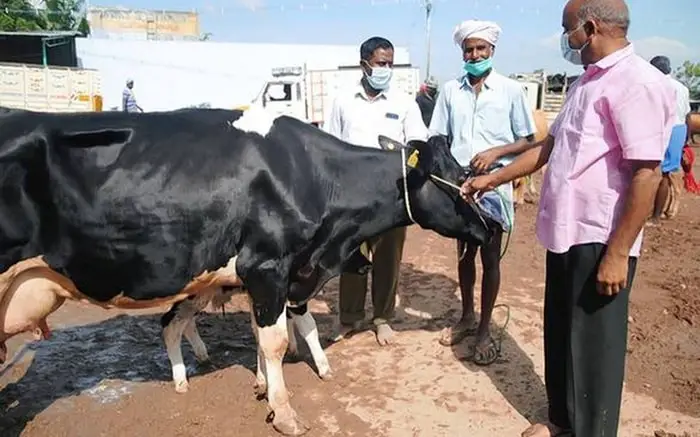
1. Lumpy Skin Disease
The lumpy skin disease or LSD is one of the most devastating cattle skin diseases. The disease is caused by the Lumpy Skin Disease Virus (LSDV), under the family Poxviridae. The disease causes nodular lesions on the dermis and epidermis of the skin and involves the underlying muscles and facia. Bacteria further invade the condition, and the animal becomes more critical. The disease causes severe loss of production and performance of the dairy and beef farms. Prevention is the best way, and correct treatment can reduce the loss of animals on the farm.
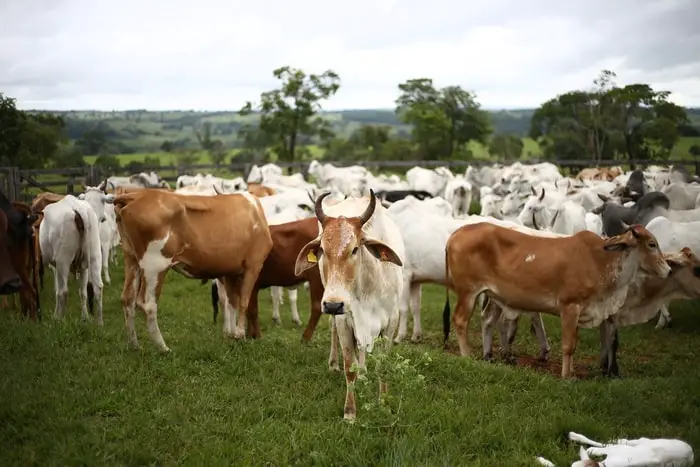
2. Warts or Papillomatosis
Bovine papillomatosis or viral warts in cattle is another most important disease of cattle. The Papillomatosis virus causes the disease under the family Palliomaviridae. The papillomatosis causes lesions on the skin and subv=cutaneous tissues of the cattle, especially in the mouth, neck, thighs, udder, mouth, tongue, eyes, eyelids, ears, anus, and tail. The disease deteriorates the quality of the skin, reduces the production and performance of the animals. Viral warts can be prevented by vaccination and treated by auto-immune vaccines.
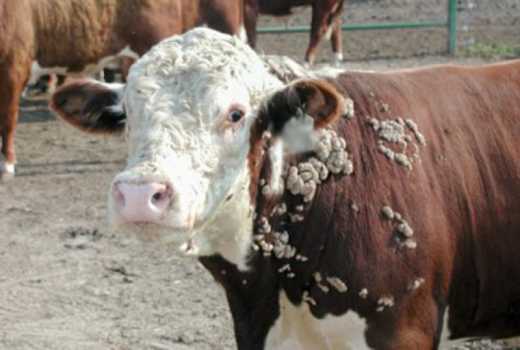
3. Photosensitization in Cattle
Photosensitization is one of the common skin diseases of cattle that remain under direct sunlight. The disease is caused primarily by the photosensitive pigment in the skin by ingestion of grass or plants containing the pigments. The disease is also caused secondarily due to liver damage that can’t digest the chlorophyll properly and is exposed to the skin. The photosensitive lesions are caused by the UV lights of the sun in the presence of photosensitive pigments. The common sites of lesions are exposed skin, non-pigmented skin, and udder. The Ultra-Violate light causes damage to the skin, is vulnerable to secondary bacterial infections and loss of production.
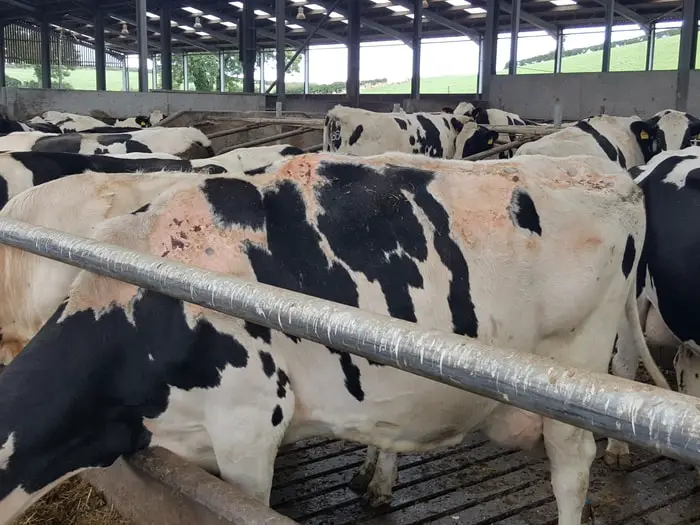
4. Foot and Mouth Disease (FMD) in Cattle
FMD is another highly contagious and infectious viral disease of all cloven-hoofed animals (cattle, sheep, goat, buffaloes, and camel). The FMD virus causes the disease under the family Picornaviridae. There are seven different serotypes of FMDV like A, O, C, Asia-1, Asia-2. SAT-1, SAT-2, and SAT-3. The disease causes lesions on the skins of the mouth and foot. The lesions include small vesicles containing fluid. The vesicle rupture and is highly painful to animals. The animals can’t eat or drink, lameness, fever, loss of milk production, weight loss, and calf affected normally died. Yearly vaccination against FMDV is the only method of preventing the disease in farm animals.
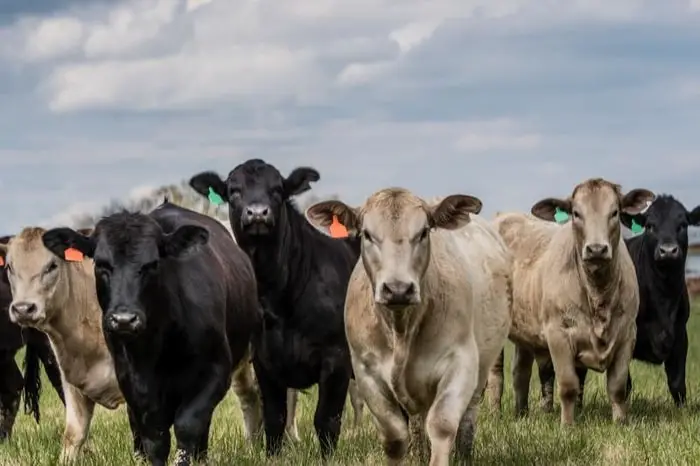
5. Vesicular Stomatitis in Cattle
Vesicular stomatitis is a common viral disease of all domestic animals like horses, cattle, sheep, goats, buffaloes, and camels. Vesicular stomatitis is caused by Vesicular Stomatitis Virus (VSV) under the family Rhabdoviridae. The disease spread rapidly by direct contact with sick animals and indirect contact with flies, contaminated food, and water. The disease causes FMD like lesions and is not so severe. The disease is self-limiting, and animals cure after two weeks without treatment.
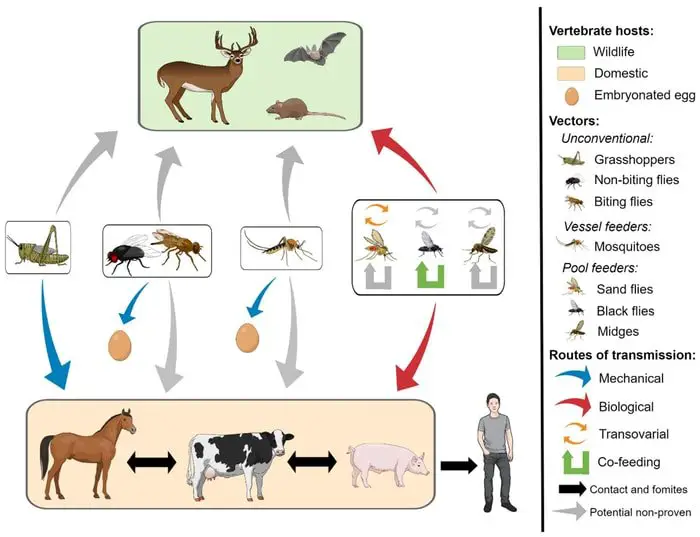
6. Rian Scald or Dermatophilosis
Rain scald is an infectious bacterial disease of the skin of cattle caused by Dermatophilus congolensis. Dermatophilosis is characterized by exudative dermatitis with heavy scald formation in the back and buttock region. The dermatophilosis may be acute or chronic. There may be the formation of granuloma under the skin and lymph nodes.
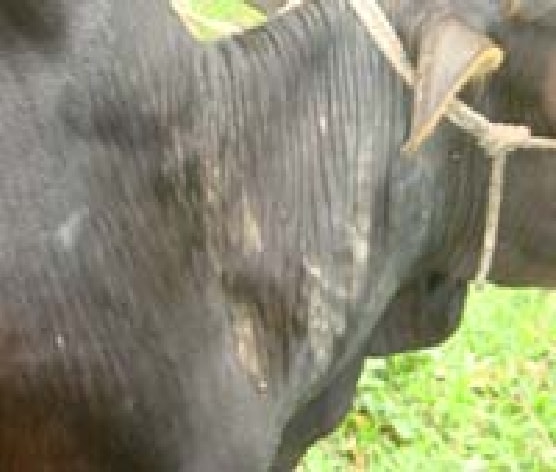
7. Ringworm in Cattle or Dermatophytosis
Ringworm in cattle or dermatophytosis is a common fungal infection of cattle and other domestic animals. The disease is highly contagious and also spreads to human beings. The disease is caused by Trichophyton verrucosum, Microsporum spp, and Trichophyton mentagrophytes. The fungus affected the skin and epidermis and caused lesions to look like a ring. The fungus severely damages the skin, itching, oozing, hair loss, anorexia, weight loss, and reduced production.
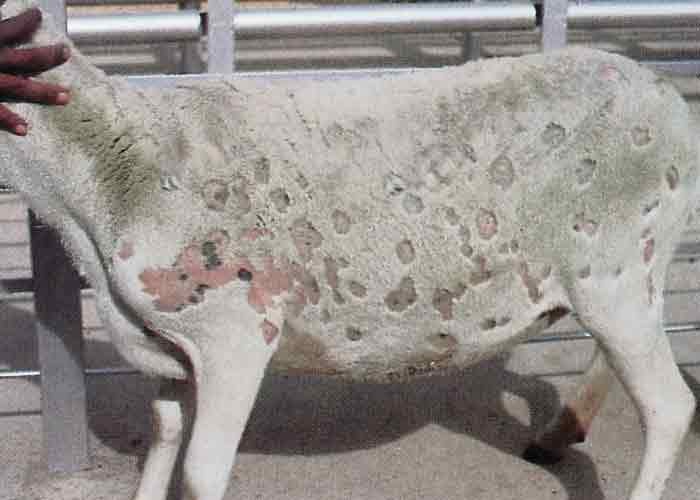
8. Cellulitis or Subcutaneous Abscess in Cattle
Cellulitis is the inflammation of the hair follicle and results in subcutaneous abscess formation under the skin. The condition is caused by any external wounds, faulty injections, or fighting with other animals. The skin becomes red, swelling, loss of hair, pus formation, and fever. The affected animal may off feed and becomes weak. The condition becomes worst when there is an infection with bacterial spores. Proper dressing of wounds and strict hygienic measures can prevent the disease in farm animals.
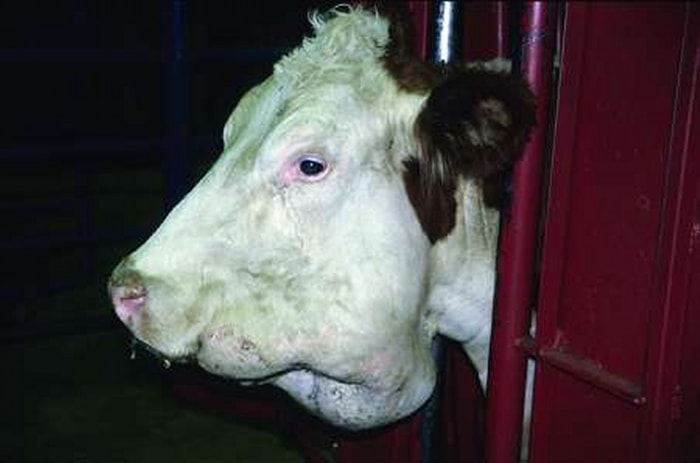
9. Cow Skin Diseases: Foot Rot
Footrot in cattle is a highly infectious and contagious disease of cattle. The causative organisms of the disease are Fusobacterium necrophorum and Porphyromonas levii. The bacteria are generally present in the cattle shed and enter into the foot’s soft tissue if any wound or abrasion occurs. The disease causes severe lameness, fever, and necrosis in the interdigital space of the hoof. The disease is excruciating and may lead to myiasis. The animals cannot stand, eat, and drink. There is a severe loss of production in dairy cattle. Proper wound management and hygienic measures can prevent the disease in cattle farms.
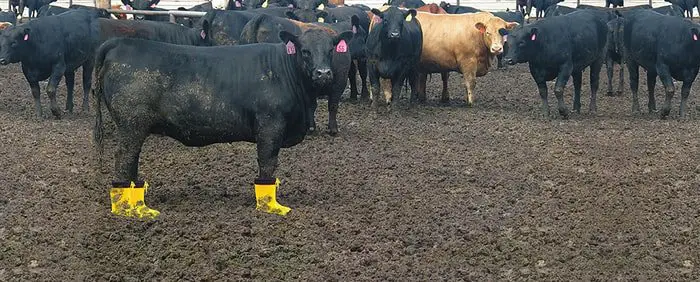
10. Cattle Skin Diseases: Mange
Mange is the common infectious disease of cattle and other domestic animals caused by mites. Mange infestation is commonly seen in the autumn and winter seasons of the year. The mites are generally found in the neck, dewlaps, ears, eyelids, and tail. The condition is highly itchy, produces small nodules, and may be invaded by secondary bacterial infections. They damage the skin of the cattle, restlessness, reduced feed intake, and loss of production in farm animals. The treatment is anti-mites dipping and pours on and parenteral injection of ivermectin.
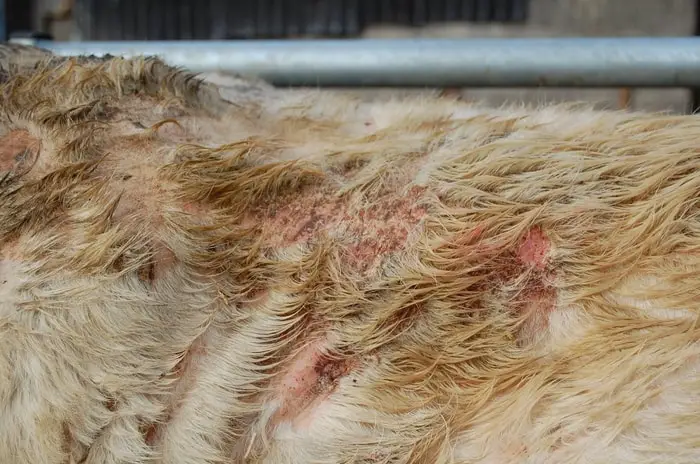
11. Cattle Pox or Cow Pox
Cowpox or vaccinia virus is a common vesicular disease of cattle. The disease is closely related to the smallpox virus in humans. The virus produces vesicular lesions on the skin of the teat and is transmitted by the milking to humans and other animals. The milkman who milks the cows with this disease develops immunity against the smallpox virus. The disease causes vesicles on the teat, the vesicle rupture and causes pain, infected by secondary bacterial infection, and necrosis of the teat and udder.
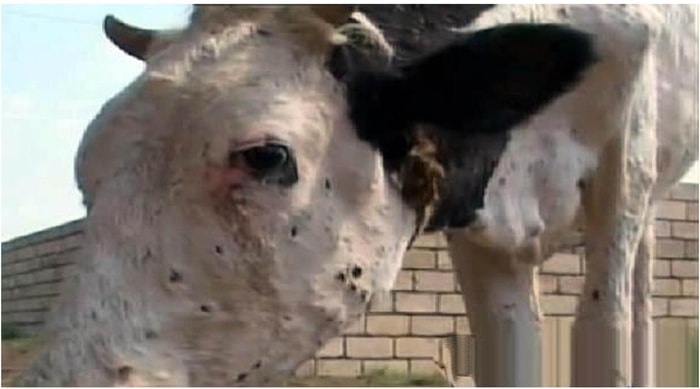
12. Bovine Farcy/ Bovine Nocardiosis
Bovine farcy or bovine nocardiasis is a chronic bacterial disease of cattle and humans caused by Nocardia farcinia. The disease is causing lesions in the legs, neck, and base of the ears. There is swelling of lymph nodes, subcutaneous abscess formation, and pus formation in the nodules. The abscess may spread to the internal organs and leads to the death of the animals. The abscess should be drained, dressing with antiseptic and antibiotic treatment will cure the disease.
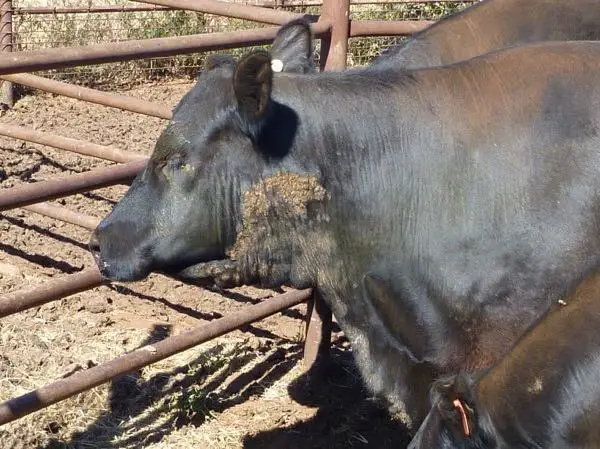
13. Cattle Skin Diseases: Elephant Skin Disease
Elephant skin disease or besnoitiosis is a protozoal disease of cattle, horses, donkeys, and several wild animals caused by Besnoiti Benoit. The disease causes lesions in the skin, subcutaneous tissues, blood vessels, mucous membrane, and other internal organs. The clinical signs of the disease are:
- Edematous swelling of the skin.
- Enlargement of superficial lymph nodes.
- Fever.
- Formation of parasitic cysts under the skin.
- Death in severe cases.
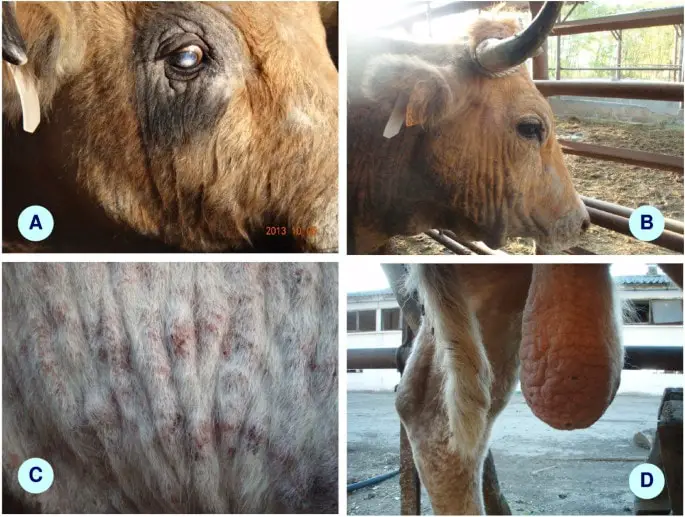
Final Advice on Cow Skin Diseases
Skin diseases are irritating and production hampering in farm animals. Most skin diseases do not do the death of the animals but seriously disturb the production and performance of the farm animals. The diseases can be controlled and prevented by hygienic measures, vaccination, and timely supervision. I think this article will help you diagnose and take necessary actions about cow skin diseases.